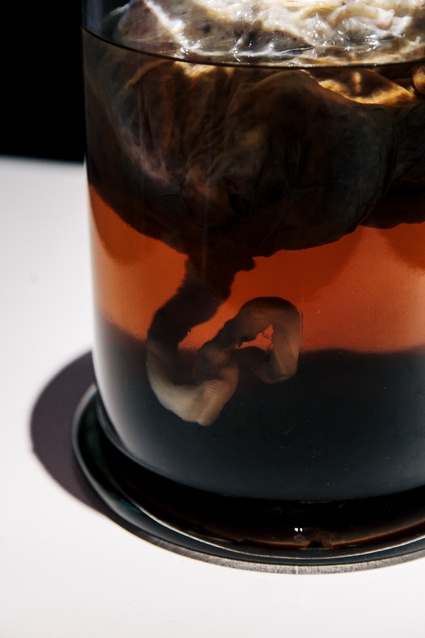 Shaun McCann, A human placenta from ‘Stem Cell Transplantation. Part of BLOOD at Science Gallery at Trinity College Dublin
Shaun McCann, A human placenta from ‘Stem Cell Transplantation. Part of BLOOD at Science Gallery at Trinity College Dublin
It flows throughout our bodies and yet some of us faint when they see a drop of it. It is a key features in stories of vampires and children fairytales. It is the fluid that is most closely associated to life but also to the Ebola virus, diseases transmitted by mosquitoes and other life-threatening conditions.
BLOOD at Science Gallery Dublin
The 25 artworks that make the exhibition BLOOD (Not for the faint-hearted) aptly reflect the complex space that blood occupies in our cultures. From the vampire killing kit to the video of stem-cell extractions, from the luminol dripped down onto a sculpture made of blood and resin to Hermann Nitsch’s cathartic Theatre of Orgies and Mysteries, all grounds seem to be covered: history, pure science, crime, medicine, literary fiction, ethics and taboo.
A couple of works in the show might be upsetting for some and indeed the gallery recommends it to the 15+. Strangely enough, i had no problem visiting the show but writing about it makes me far more uncomfortable. I could not even watch the video of Maria Phelan’s work MYTYPE.
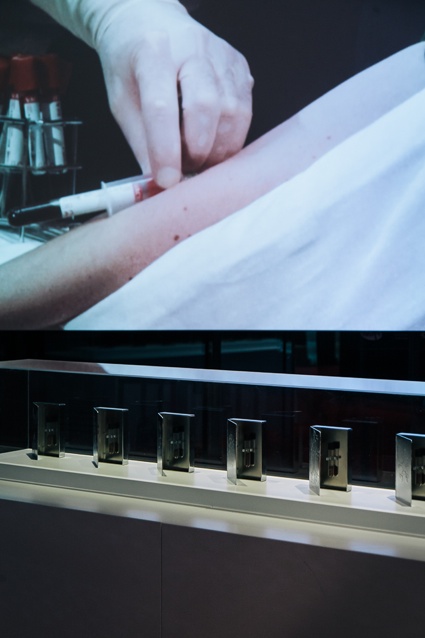 Marion Laval-Jeantet and Benoit Mangin, May the Horse live in Me! Part of BLOOD at Science Gallery at Trinity College Dublin
Marion Laval-Jeantet and Benoit Mangin, May the Horse live in Me! Part of BLOOD at Science Gallery at Trinity College Dublin
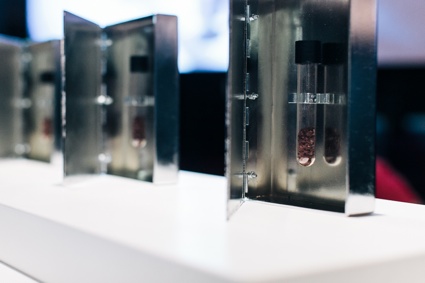 Marion Laval-Jeantet and Benoit Mangin, May the Horse live in Me! (Dried horse blood) Part of BLOOD at Science Gallery at Trinity College Dublin
Marion Laval-Jeantet and Benoit Mangin, May the Horse live in Me! (Dried horse blood) Part of BLOOD at Science Gallery at Trinity College Dublin
One of the works that opens the show is a documentation of Que le cheval vive en moi! (May the horse live in me!), a performance in which Marion Laval-Jeantet was injected with horse blood plasma. This bold self-experiment continues the artistic duo’s exploration of trans-species relationships.
In the months preceding the performance, Marion Laval-Jeantet built up her tolerance to the foreign animal bodies by being injected with horse anibodies. The artists called the process “mithridatization“, after Mithridates VI of Pontus who cultivated an immunity to poisons by regularly ingesting sub-lethal doses of the same. Once her body was ready, she was injected with horse blood plasma containing the entire spectrum of foreign antibodies, without falling into anaphylactic shock, an acute multi-system allergic reaction.
In this Science Gallery interview below, Benoit Mangin explains how Marion was able to hide the eyes of the horse. A horse would normally react very violently to having his eyes covered but somehow, the animal didn’t perceive her as being an entirely different organism.
May the Horse Live in Me! at BLOOD
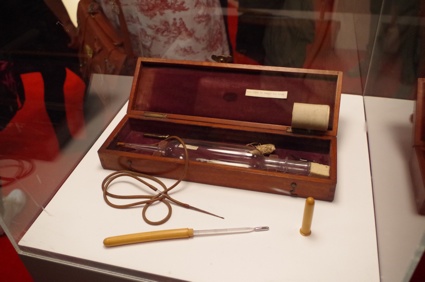 Robert McDonnell’s blood transfusion apparatus on display. Photo The City.ie
Robert McDonnell’s blood transfusion apparatus on display. Photo The City.ie
Nearby, lies the apparatus used by surgeon Robert McDonnell on a fourteen year old girl whose arm was torn and lacerated while she was working in a paper mill. Robert drew 350 millilitres of blood from his own arm and syringed it back into Mary Anne. The girl’s condition improved for a short time, but she died the day after. It was the first human-to-human blood transfusion performed in Ireland.
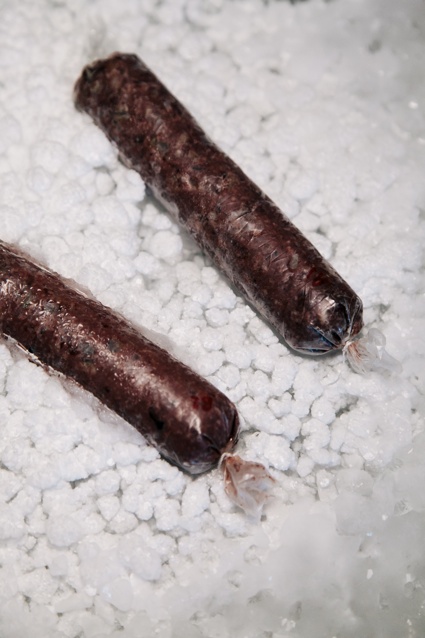 John O’Shea, Black Market Pudding. Part of BLOOD at Science Gallery at Trinity College Dublin
John O’Shea, Black Market Pudding. Part of BLOOD at Science Gallery at Trinity College Dublin
John O’Shea is showing a video recipe of his renowned delicacy, the Black Market Pudding. Just like we get milk from cows and eggs from chicken without the need to kill them, we could also get fresh blood from pigs and make black pudding, a type of blood sausage commonly eaten in Britain and Ireland.
The blood is extracted from living pigs via a routine veterinary procedure and the whole business model ensures that the pig grows old peacefully. Kind of. And because vegetarian suet is used to emulsify the ingredients, the black market pudding is branded as being an ethical animal product.
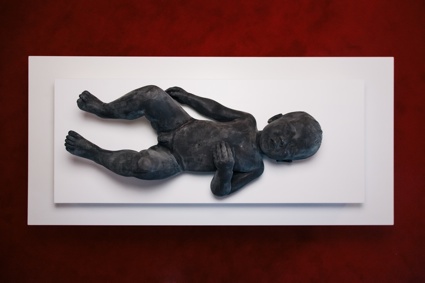 Marc Quinn, Legion. Dried horse blood as part of BLOOD at Science Gallery at Trinity College Dublin
Marc Quinn, Legion. Dried horse blood as part of BLOOD at Science Gallery at Trinity College Dublin
Marc Quinn is an artist famous for many reasons. One of them is a series of casts of his head made out of 8 pints of his own blood, frozen.
Quinn is participating to the show with a wax model of his baby son. The sculpture is made of wax mixed with animal blood and protein his son is intolerant to. The work is thus both tender and savage. It evokes the love for a child and the cruelty of appropriating the blood of a non-human animal.
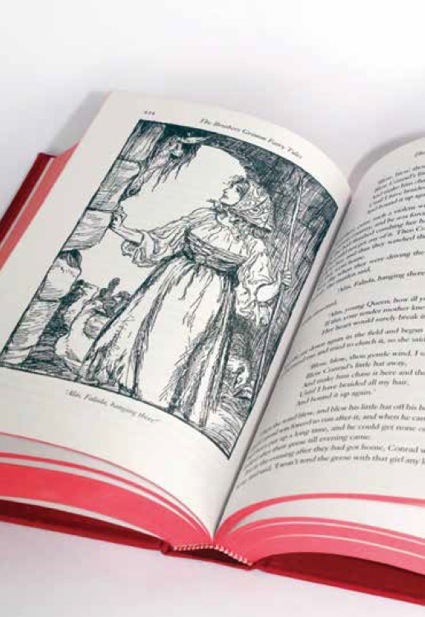 Peter Arnds, The Nazi Ideology of Blood and Blood-Ridden Tales From German Children’s Literature
Peter Arnds, The Nazi Ideology of Blood and Blood-Ridden Tales From German Children’s Literature
Professor Peter Arnds is showing a fascinating collection of German children’s books in which children come to harm and blood is shed, posters that detail the Nazis’ obsession with blood and its purity, and a short video on the Nazis’ ideology of blood.
It turns out that children’s literature and folktales are quite at ease with the depiction of murder, cannibalism and other violent scenes. In Germany and elsewhere. One example of this is Charles Perrault’s version of Little Red Riding Hood from 1697or the Grimm Brothers’ original fairytales.
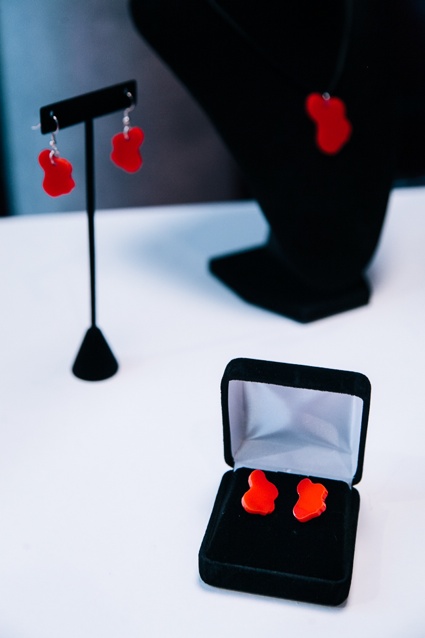 Chella Quint, STAINS™. Part of BLOOD at Science Gallery at Trinity College Dublin
Chella Quint, STAINS™. Part of BLOOD at Science Gallery at Trinity College Dublin
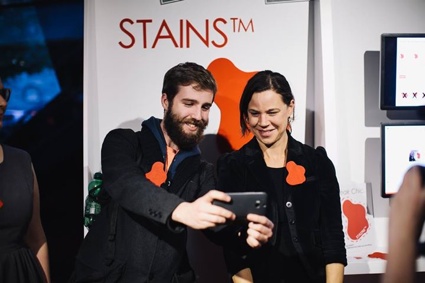 Chella Quint, STAINS™. Part of BLOOD at Science Gallery at Trinity College Dublin (image from the Science Gallery facebook page)
Chella Quint, STAINS™. Part of BLOOD at Science Gallery at Trinity College Dublin (image from the Science Gallery facebook page)
There is a lot of humour in the gallery as well. STAINS™ is a fake company that challenges the hypocrisy of marketers trying to sell female menstrual products while showing blue liquids and pretty girls laughing in the sunshine.
Visitors to the exhibition are invited to take a selfie with one of the blood stain broaches made by STAINS™ and share the photo via the Twitter with the hashtag #periodpositive. You can also buy the blood stains as earrings or pendant.
More images from the show:
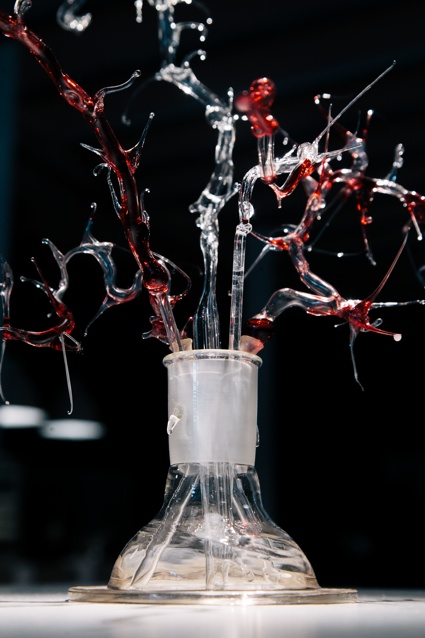 Charlie Murphy, Blood Vessels. Part of BLOOD at Science Gallery at Trinity College Dublin
Charlie Murphy, Blood Vessels. Part of BLOOD at Science Gallery at Trinity College Dublin
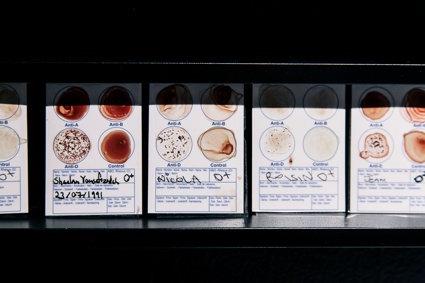 Maria Phelan, MyType. Part of BLOOD at Science Gallery at Trinity College Dublin
Maria Phelan, MyType. Part of BLOOD at Science Gallery at Trinity College Dublin
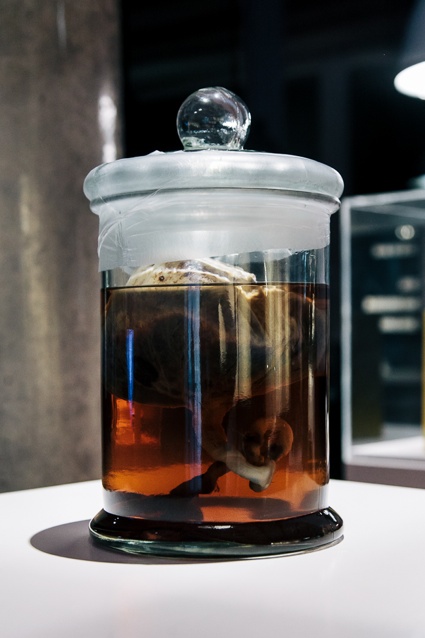 Shaun McCann, A human placenta from ‘Stem Cell Transplantation. Part of BLOOD at Science Gallery at Trinity College Dublin
Shaun McCann, A human placenta from ‘Stem Cell Transplantation. Part of BLOOD at Science Gallery at Trinity College Dublin
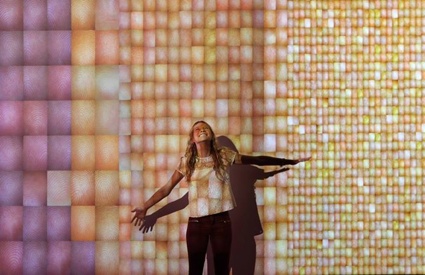 Rafael Lozano-Hemmer, Pulse Index. Part of BLOOD at Science Gallery at Trinity College Dublin
Rafael Lozano-Hemmer, Pulse Index. Part of BLOOD at Science Gallery at Trinity College Dublin
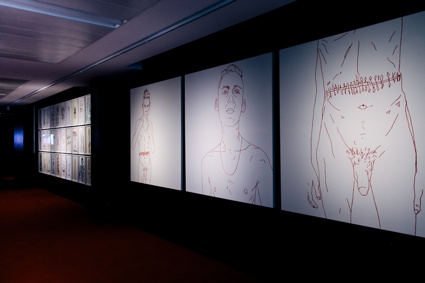 Franko B, Lover. Part of BLOOD at Science Gallery at Trinity College Dublin
Franko B, Lover. Part of BLOOD at Science Gallery at Trinity College Dublin
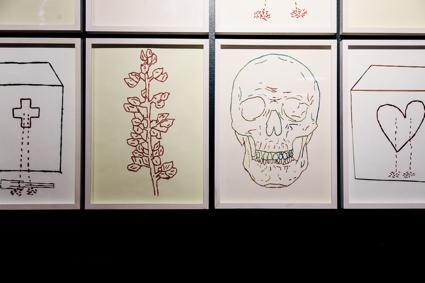 Franko B, Woof Woof. Part of BLOOD at Science Gallery at Trinity College Dublin
Franko B, Woof Woof. Part of BLOOD at Science Gallery at Trinity College Dublin
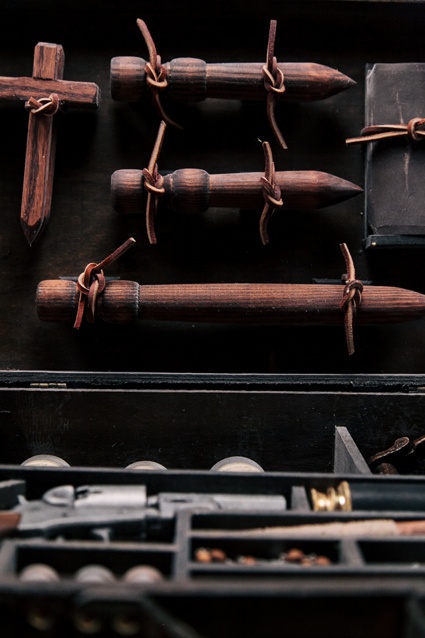 Clemens Ruthner, Vampire Killing Kit. Part of BLOOD at Science Gallery at Trinity College Dublin
Clemens Ruthner, Vampire Killing Kit. Part of BLOOD at Science Gallery at Trinity College Dublin
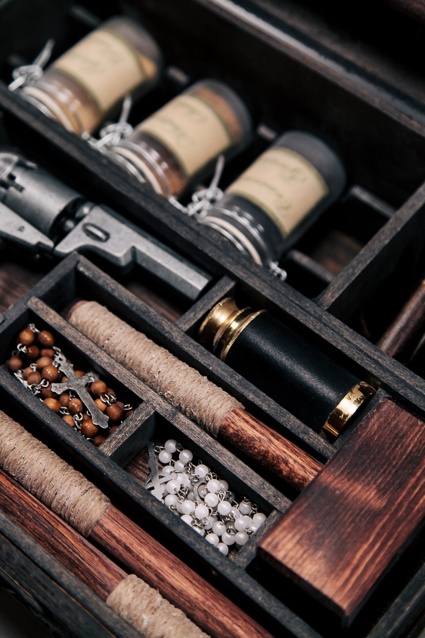 Clemens Ruthner, Vampire Killing Kit. Part of BLOOD at Science Gallery at Trinity College Dublin
Clemens Ruthner, Vampire Killing Kit. Part of BLOOD at Science Gallery at Trinity College Dublin
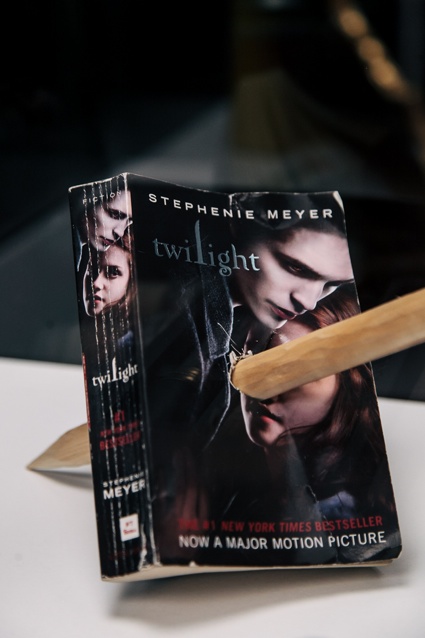 Clemens Ruthner, Vampire Killing Kit. Part of BLOOD at Science Gallery at Trinity College Dublin
Clemens Ruthner, Vampire Killing Kit. Part of BLOOD at Science Gallery at Trinity College Dublin
The exhibition was curated by curator and media studies scholar Jens Hauser, haematologist Prof Shaun McCann, Immunologist Prof Luke O’Neill, literary and cultural scholar Prof Clemens Ruthner and Science Gallery Dublin director Lynn Scarff. It remains open at the Science Gallery Dublin until tomorrow, Friday 23rd of January.
